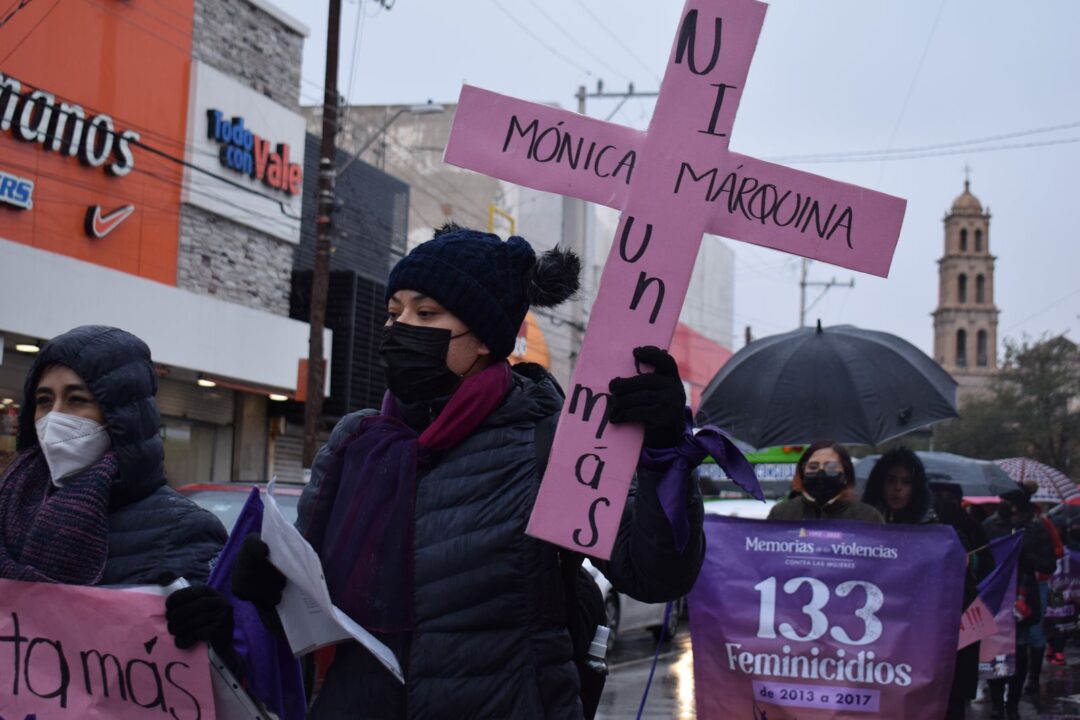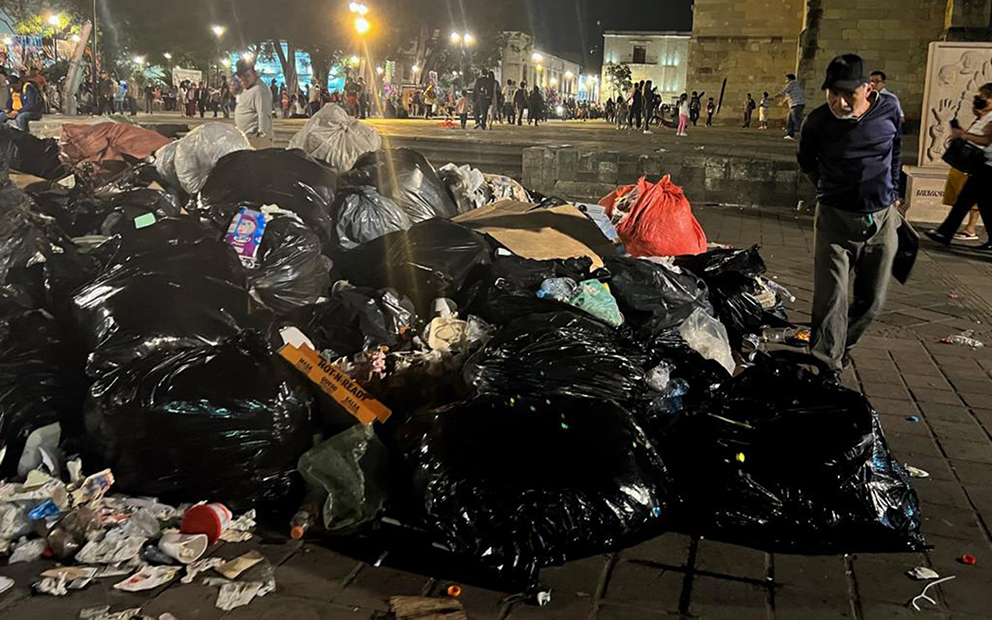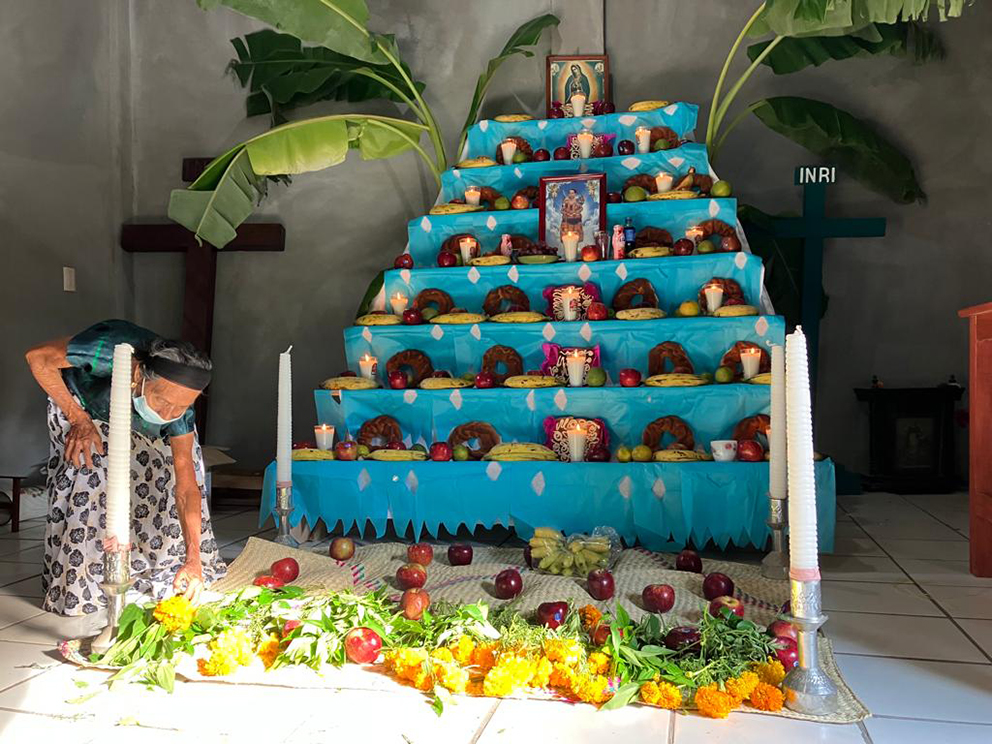Understanding Mexico’s proposed electoral reform
16 noviembre, 2022

The electoral reform proposed by Mexico’s federal executive goes beyond disappearing the National Electoral Institute, as was suggested during a recent march. In this special program on Rompeviento TV, Violeta Nuñez, a researcher at the Autonomous University of México, went into detail about initiative, which seeks to reduce privileges that are maintained with public resources.
Text by: Pie de Página editors, originally published November 15, 2022.
Photo by: Alejandro Ramírez / Cuartoscuro
MÉXICO CITY—The media coverage of the protest called in defense of the National Electoral Institute (INE) showed many of those in attendance were there out of concern for the modification of the INE. But the proposal for reform goes beyond that, as Autonomous University of México researcher Violeta Nuñez explained on Rompeviento TV.
There are 10 major objectives the proposal seeks to achieve via the reform of 18 Constitutional Articles, according to the congressional Parliamentary Gazette’s analysis of the initiative, which was drafted by president Andrés Manuel López Obrador.
Nuñez described the contents of the reform, which in addition to modifying 18 Constitutional Articles, would change 7 provisional articles.
•The initiative seeks to reduce the amount of financing given to political parties so that it is only available during electoral campaigns and not for ordinary, permanent party activities, as is currently the case.
•The initiative ensures political parties access to radio and TV for electoral purposes
•The INE and state electoral organizations would be transformed into a single organization, the INEC (National Institute for Elections and Plebiscites).
•Members of the INEC and the Federal Justice System’s Electoral Tribunal would be chosen through popular vote and not through Congress’s Political Coordination Committee. Candidates to the INEC will first be proposed by congress.
•The number of congresspeople will be reduced from 300 to 200 and the number of senators reduced from 128 to 96. They will be elected by votes in each federal entity in relation to population (not the number of residents) according to lists presented by the parties.
•City council elections will take place under the same rules regarding candidate lists.
•The introduction of electronic voting.
Electoral council privileges
In the INE as it currently exists, according to the 2022 Budget, the council president and representatives are paid 182,041 pesos (US$9,102) per month, with benefits of 72,768 pesos (US$3,638), for a total of 254,809 pesos (US$12,740) per month.
The INE’s General Secretary is paid 171,029 pesos (US$8,551) a month, plus benefits worth 69,255 pesos (US$3,462) for a total of 240,284 pesos (US$12,014) monthly.
Next year, according to the budget as it has been approved, INE councillors will be paid the same amount. Annually, they earn 3,057,708 pesos (US$152,885), or 8,494 pesos (US$418) each day.
Nuñez compares those earnings with México’s daily minimum wage, which is 172.87 pesos (US$8.64). Over 19 million people in México earn minimum wage. The salary of election officials is 49 times more than minimum wage, or 4,913 percent more. The question after seeing these privileges, the question is, why shouldn’t the INE be reformed?
The annual benefits received by INE council members may vary, but it includes social security, solidarity savings payments, vacation payments, a yearly bonus of over 500,000 pesos (US$25,000), institutional life insurance, health insurance, and more.
The academic says the effort to reform the INE is inscribed in López Obrador’s policy of republican austerity.
The election of electoral authorities like electoral representatives and judges will be opened up to the public, and will not be carried out only by Congress’s Political Coordination Committee.
Congressional elections
Nuñez notes there is a graph in the document which compares the number of residents in different countries with the number of legislators.
China has more than 1.4 billion residents and 2,987 representatives. India, which has a population of more than 1.3 billion, has 552 representatives. The US has more than 300 million residents, but elects less representatives than the 435 elected in México. In México we’re 126,000,000 people, and we elect 500 representatives.
“We can’t compare in proportional terms to India, but we have almost the same number of representatives, and a few less senators; they have 250 and we have 128,” said Nuñez.
This issue is not only the large number of representatives in Mexico, but how the numbers impact the legislature and the senate. More representatives does not mean efficient legislative work.
There’s also a discussion on how lawmakes will be elected.
“There’s a whole debate around the idea that not all [the representatives] will be elected based on choice,” said Nuñez. She said popular vote for a candidate as compared to voting for a party list with quotas, as proposed in the reform, represents a significant change.
One of the items included in the reform is that states and municipalities will also vote according to lists. That is to say, voting for parties with lists won’t just be applied during federal elections.
Legislator salaries
“Reducing the number of lawmakers is also related to the privileges” they enjoy, said Violeta Nuñez.
Members of congress earn an annual salary of 74,994 pesos (US $3,749) a month. That’s 2,500 pesos (US$125) per day, which is 1,446 more than minimum wage. Every month they also receive 45,000 (US$2,250) in support for legislative assistance, 28,000 pesos (US$1,400) for covering citizen outreach, transportation, lodging, and so on. They receive 28,000 pesos (US$1,400) for legislative assistance and 15,000 pesos (US$750) for parliamentary assistance. That’s multiplied by 500 representatives.
Members of the senate make more than 105,600 pesos (US$5,000) per month, or 3,520 pesos (US$176) per day. Their bonuses are worth 202,000 pesos (US$10,100). They receive subsidies for 300,000 pesos (US$15,000), secretarial assistance for 100,000 pesos (US$5,000), 200,000 pesos in housing support (US$10,000), and life insurance equivalent to 40 months of their salary, up to 4.2 million pesos (US$210,000).
Party finance reform
“I think limiting financing to political parties is crucial,” said Violeta Nuñez. The proposal is to reduce government financing for political parties to campaign spending, and cutting parties off from regular monthly payments.
Reforming how the government finances parties is essential. “This, to me, is of key importance,” said the academic. “How will the money that goes to parties, especially during the electoral process, be regulated?”
“Every year more than 11 billion pesos (US$550 million dollars) is destined to parties through public subsidies so that they can carry out their everyday activities, and that’s a lot of money that doesn’t need to be spent,” she said.
The growth in funding to parties is easy to see, says Nuñez. It grew from over 13,000,000 pesos (US$750,000) in 1999 to more than 68,000,000 pesos (US$340,000) in 2018.
The researcher noted that it is important that elections be protected from illicit financing from sources such as organized crime. And there is still work to be done with regards to the participation and representation of Indigenous peoples and Mexicans of African descent.
Ayúdanos a sostener un periodismo ético y responsable, que sirva para construir mejores sociedades. Patrocina una historia y forma parte de nuestra comunidad.
Dona

















